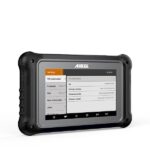This guide provides comprehensive information on wiring for engine swaps in 1996 Honda Del Sol models, specifically focusing on OBD2 systems. Understanding the intricacies of OBD2 wiring is crucial for a successful engine swap. This article will cover various swap scenarios, common issues, and solutions to ensure your Del Sol runs smoothly after the engine swap.
Understanding OBD2 in Your 96 Del Sol
The 1996 Del Sol utilizes the OBD2 (On-Board Diagnostics II) system, a standardized system for monitoring and diagnosing emissions-related issues. OBD2 systems provide real-time data on engine performance and emissions, allowing for quicker and more accurate diagnosis of problems. This is a critical factor to consider when performing an engine swap. The 96 Del Sol specifically uses the OBD2A standard.
Common Engine Swap Scenarios in a 96 Del Sol
Several engine swaps are popular in the 96 Del Sol community. Here are some common scenarios and their associated wiring challenges:
OBD2A Engine into OBD2A Del Sol
Swapping a compatible OBD2A engine into your Del Sol is generally the most straightforward scenario. However, subtle wiring differences can exist depending on the donor engine and the original engine in your Del Sol. For example:
- D16Y8 into a D16Y7: While mostly plug-and-play, this swap requires wiring for VTEC (Variable Valve Timing and Lift Electronic Control), the knock sensor, and potentially adjusting the idle air control valve (IACV) wiring. Relocating the intake air temperature (IAT) sensor may also be necessary.
- B-Series Engine Swaps (B16A2, B18C1): These swaps often require similar wiring adjustments as the D16Y8 swap, including VTEC, knock sensor, and IACV modifications. Additionally, secondary O2 sensor wiring extensions might be necessary.
OBD1 Engine into OBD2A Del Sol
Swapping an OBD1 engine into an OBD2A Del Sol introduces more significant wiring complexities. Key considerations include:
- ECU Compatibility: Using an OBD1 ECU necessitates addressing several wiring discrepancies. This often involves eliminating components like the crankshaft fluctuation (CKF) sensor, secondary O2 sensor, and evaporative emission (EVAP) purge solenoid.
- Distributor Compatibility: OBD1 distributors often require adapters to function correctly in an OBD2A Del Sol.
- Injector Considerations: OBD1 injectors may require modifications to fit the OBD2A fuel rail or harness.
Key Wiring Components and Considerations
Regardless of the specific engine swap, understanding these key components is vital:
- VTEC Wiring: If swapping to a VTEC engine from a non-VTEC engine, properly wiring the VTEC solenoid and pressure switch is critical for proper engine operation.
- Knock Sensor: Ensuring the knock sensor is correctly wired is essential for preventing engine damage from detonation.
- IACV Wiring: Proper IACV wiring is crucial for maintaining stable idle speed.
- O2 Sensor Wiring: Correct O2 sensor wiring is crucial for accurate fuel mixture control and emissions compliance. The 96 Del Sol uses a 4-wire O2 sensor.
- Distributor Wiring: Using the correct distributor and ensuring proper wiring is vital for ignition timing.
Resources and Tools
- Wiring Diagrams: Accessing detailed wiring diagrams for both the donor engine and your Del Sol is essential.
- OBD2 Scanners: An OBD2 scanner can help diagnose any issues after the swap is complete.
- Soldering Iron and Heat Shrink Tubing: These tools are essential for making clean and reliable wiring connections.
- Multimeter: A multimeter is invaluable for testing continuity and voltage in the wiring harness.
Conclusion
Successfully completing an engine swap in a 96 Del Sol requires a thorough understanding of OBD2 wiring principles. By carefully considering the specific swap scenario, addressing key wiring components, and utilizing appropriate resources, you can ensure a smooth and reliable engine swap. Remember to consult reputable sources and seek professional assistance if needed. A properly executed engine swap can significantly enhance the performance and enjoyment of your Del Sol.


